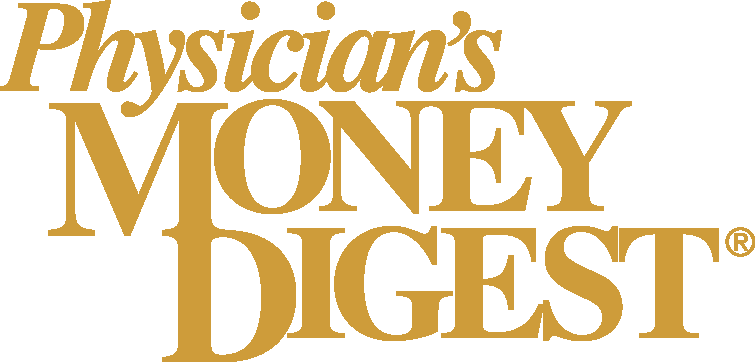
- Medical Economics May 2025
- Volume 102
- Issue 4
- Pages: 11
Share buybacks versus dividends: No contest which is better for investors
Key Takeaways
- Stock buybacks, now common, were once illegal due to concerns of stock manipulation, but they primarily benefit executives by boosting short-term stock prices.
- Buybacks are often misleadingly equated with dividends, yet they don't provide direct returns to shareholders, unlike dividends.
Buybacks are often illogically equated with dividends — the direct distribution of profits to shareholders in cash on a periodic basis at the discretion of corporate boards.
When reading advisor commentary or watching financial TV channels, it’s not unusual to see corporate stock buybacks portrayed as highly positive events for shareholders.
Buybacks (aka share repurchases) are when corporations buy outstanding shares of their own stock.
The prevalence of this practice globally has increased dramatically over the past few decades. In the U.S., corporate expenditures for buybacks have grown at an increasing rate in recent years and
This is a far cry from the first half of the
Buybacks are often illogically equated with dividends — the direct distribution of profits to shareholders in cash on a periodic basis at the discretion of corporate boards.
Bird in the bush
By contrast, though buybacks usually push company stock prices up briefly, there are no payments to shareholders. So, equating them with dividends is like saying that a bird briefly in the bush is the same as one in the hand.
And unbeknownst to many individual investors, the bird in the bush can be an illusion.
Although board decisions to pay dividends usually reflect good recent financial metrics, buybacks are a way for companies to artificially increase earnings growth. Dividends usually reflect virtue, whereas buybacks are disingenuously virtue signaling.
Despite this obvious substantive difference, CEOs announcing buybacks often conflate them with dividends.
This was the case on March 26, when Cognizant CEO Ravi Kumar S, in proudly discussing the tech company’s plans for share buybacks in a media interview, said without qualification that this year, the company “will return $1.7 billion to investors.”
Return? Really? Actually, that would be the case with dividends but not with a buyback.
Sure, buybacks usually increase the value of outstanding shares by taking them off the market, but calling a share buyback a “return” to shareholders is a stretch. Shareholders peering at their brokerage accounts online looking for a direct return from the company would get blurred vision waiting for Godot.
Generally, the reality is that buybacks tend to benefit corporate executives more than the shareholders who own the company. That’s because, at many companies, too much of executives’ compensation is directly linked to the short- and midterm growth of stock prices, as opposed to long-term corporate growth. Buybacks are a reliable way to boost share prices over the short term, increasing payouts to executives.
So, depending on timing, buyback decisions by boards chaired by CEOs — and that’s the case with most companies — involve a conflict of interest when the CEO is seeking to hit stock-price targets to enhance payouts. That’s one reason why some progressive companies have nonexecutive board chairmen by charter.
Financial media aren’t inclined to clear up widespread investor confusion over buybacks. Instead, they increase it by almost universally portraying buybacks as the greatest thing since sliced bread. Never mind that many announced buybacks aren’t completed — lapses that are questionable at best.
Governance bête noire
The widespread positive view of buybacks is curious in light of the corporate governance position that they are anything but supportive.
A 2023 article in the
That is, they seek a gain from trading, which is often a tricky task, instead of receiving a real cash dividend from the company.
As the article indicates, instead of using excess cash to repurchase shares, corporate boards would better serve shareholders by
In the long term, doing so would improve corporate wherewithal to pay real dividends — the kind that says, “e pluribus unum.”
Doing buybacks is actually contrary to corporate directors’ responsibility to always act in the best interests of shareholders, known as the
Buybacks put large sums from corporate coffers
Depending on market pricing at the time, buybacks can transfer wealth from shareholders to insiders. This is no small irony, as executives are supposed to enrich shareholders in return for incentive compensation that’s appropriately linked to the degree that shareholders are enriched.
Investors can learn about corporate compensation programs designed to motivate executives in shareholders’ interests (or not) by reading company proxy statements on the
The illusion of benefits
The wealth transfer from shareholders to executives from buybacks occurs more or less sub rosa amid high-profile claims that shareholders benefit.
But these purported benefits are illusory because upward stock price blips from buybacks are evanescent; they can disappear in a heartbeat. In the short term, many uninformed investors get an adrenaline shot, but this fades with market forces.
The only way for shareholders to get something from a buyback is to opportunistically time the sale of shares. Yet this outcome runs counter to the often stated directors’ goal of enhancing long-term shareholder value; former shareholders are moot as far as this platitude is concerned.
So, when you hear buybacks announced, you might consider the contrary realities voiced by critics at volumes inaudible amid all the noise from company management claiming that share repurchases are good news for shareholders.
And, of course, when evaluating stocks, it’s a good idea to consider reliable dividend-paying stocks, especially those that increase these payments consistently, as an alternative to companies with the buyback habit.
Dave S. Gilreath, CFP,is founder and chief investment officer of Sheaff Brock Investment Advisors, a firm serving individual investors, and Innovative Portfolios an institutional money management firm. Based in Indianapolis, Indiana, the firms are managing assets of approximately $1.4 billion as of December 31. Investments mentioned in this article may be held by those affiliates,Innovative Portfolios’ exchange-traded funds or related persons.
Articles in this issue
7 months ago
Can AI slay the prior authorization dragon?7 months ago
Untangling practice challenges7 months ago
Are physicians responsible for AI errors?7 months ago
Untangling practice challenges: Rowing togetherNewsletter
Stay informed and empowered with Medical Economics enewsletter, delivering expert insights, financial strategies, practice management tips and technology trends — tailored for today’s physicians.














